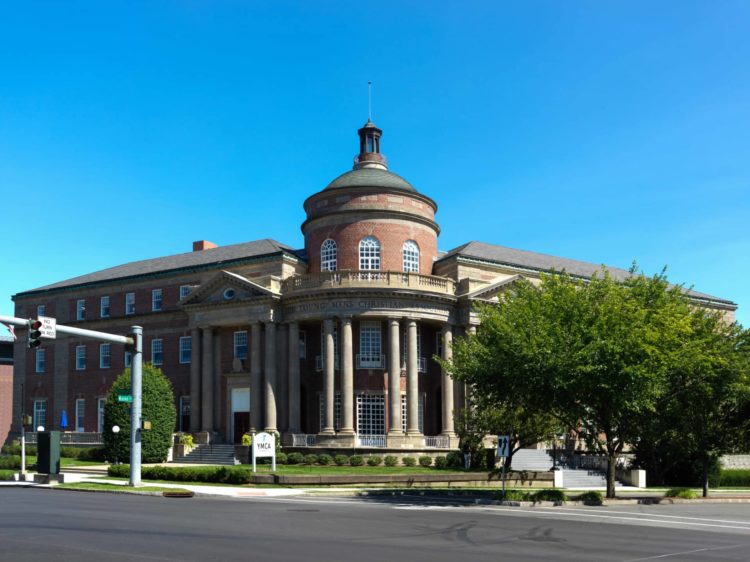The Historical Society Landmarks Recognition Program awarded plaques to the Greenwich YMCA and the Julian W. Curtiss Home for design excellence and value in preserving Greenwich’s unique architectural heritage at a reception at Greenwich Historical Society’s Annual Meeting. More than 300 structures have received plaques since the Landmarks Recognition Program was initiated in 1987.
“Preservation of our cherished architectural heritage, which is fast disappearing to make way for newer more contemporary designs, is the driving force behind the Landmarks Recognition program,” says Historical Society Executive Director and CEO Debra Mecky. “Our review panel selected these two structures which represent different styles and periods. They are architectural gems that enhance Greenwich’s character, and each bears relevance to the town’s sports history, a theme for many of our events this year due to our “Sports! More Than Just a Game” exhibition which closed earlier this month and was extremely popular among residents and visitors.”

Greenwich YMCA – 1915
The Greenwich YMCA at 50 East Putnam Avenue, designed by M. L. and H. G. Emery, is one of the town’s most recognizable and prominent buildings. Its distinctive tower, rounded porch, and impressive two-story Doric porticos grace the corner of East Putnam and Mason and have become an integral part of the streetscape of the northern entry point into the Greenwich business district.
The $100,000 building was built and given to the town by Rebecca Witherell completely furnished in memory of her husband Nathanial Witherell, president of the Consolidated Kansas City Smelting and Refining Company and real estate developer who was instrumental in financing Belle Haven.
While the interiors have been altered over the years and the building has been enlarged and modernized, they still manifest original details, materials and high-quality workmanship including many of the original fireplace mantels, stone details, and low-relief plaster ceilings. Greenwich is extremely fortunate to have had continual use of this notable community structure for over 100 years. It continues to contribute to the architectural integrity of one of Greenwich’s main thoroughfares and to enhance the social life of the town with low-cost recreational facilities.

Julian W. Curtiss House – 1907
Julian Wheeler Curtiss moved with his family from Belle Haven to this Georgian Revival home in 1908 or 1909. They referred to the property as “Oak Farm.” Entrance to the level, five-acre lot is made through elaborate, wrought-iron gates on the east side of Lake Avenue. Oriented to the north, the six-bay facade of the main block of the home focuses on the projecting, pedimented ell containing the main entrance and defined by colossal, corner pilasters resting on paneled pedestals. Directly above the entrance is a tall stair window crowned with round-arched transom showing tracery.
The rear (south) elevation is no less impressive, featuring three pairs of French doors opening onto a full-length terrace, the central pair sheltered by a porch supported at each outer corner by three Tuscan columns.
Mr. Curtiss was an avid sportsman and civic and business leader. He served as President and Chairman of the Board of sporting goods manufacturer A.G. Spalding and Bros. He was a member of the first Yale crew to race Harvard at New London and served as the first president of the Greenwich YMCA. Among many other local roles, Curtiss served as chairman of the Board of Education, was a member of the RTM, and president of the Greenwich Country Club (where he was an avid golfer).
Mr. Curtiss married Mary Louise Case in 1880 and had four children, Mary Louise Curtiss Pease, Jean Beardslee Curtiss Gibbons, Margaret Curtiss and Henry Tomlinson Curtiss.
The Annual Meeting took place at the Belle Haven Club. For more information: https://greenwichhistory.org/landmarks/
About Landmarks Recognition Program
The Landmarks Recognition Program has presented plaques to more than 300 structures since its inception 37 years ago, with a goal of promoting pride in ownership and the preservation and adaptive use of distinctive properties. Unique to Greenwich, the landmarks designation ensures these structures secure their rightful place in the town’s history.






